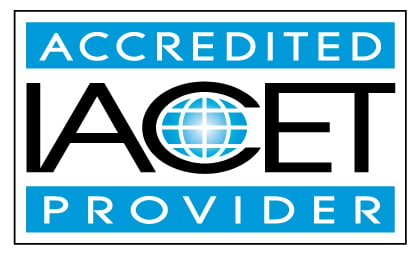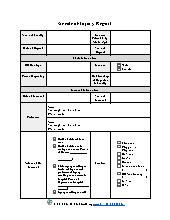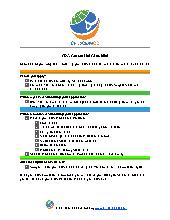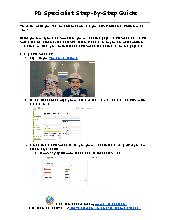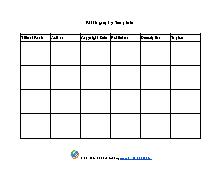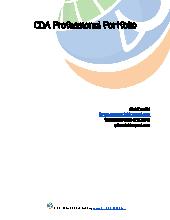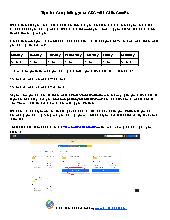CDA Bridge Bundle: Infant/Toddler - $300
The 30-hour Bridge Bundle for Maryland Child Care Providers is a specialized training designed to support Maryland child care professionals who already hold a 90-hour certification by providing the additional training required to earn the Child Development Associate (CDA) Credential. This program is especially beneficial for individuals who have completed both the 45-hour Growth and Development and 45-hour Infant/Toddler Curriculum trainings and are seeking to advance their careers and increase their earning potential in early childhood education.
Key Components and Details of the 30-hour Bridge Bundle:
Target Audience: Maryland child care providers who possess a 90-hour certification and have completed the 45-hour Growth and Development and 45-hour Infant/Toddler Curriculum trainings.
Purpose: This training program provides the remaining 30 hours required to meet the prerequisites for obtaining the CDA Credential.
CDA Credential: The CDA Credential is a highly regarded qualification in early childhood education, signifying a commitment to quality child care and educational standards and supporting career growth.
Course Content: The 30-hour Bridge Bundle covers essential early childhood education and development topics, including:
- Understanding developmental milestones of young children.
- Designing and implementing learning experiences supporting social, emotional, cognitive, and physical development.
- Accommodating children with special needs.
- Developing a professional approach within the childcare setting.
Online Format: This online course allows participants to access materials and complete the program at their own pace within a set timeframe.
Interactive Instructor Support: Participants receive guidance and support from instructors to help them understand and apply course concepts.
Portfolio Review: The training includes a portfolio review, an essential part of the CDA Credentialing process. A well-prepared portfolio demonstrates the candidate’s competence and experience with young children.
Resources and Handouts: Participants gain access to over 100 resources and handouts that enhance the training content and support practical application.
Career Advancement: Earning the CDA Credential as a Preschool teacher opens up career opportunities and can lead to higher earning potential in early childhood education, demonstrating a commitment to excellence in caring for and educating young children.
By the end of this training, the learner will be able to:
- Identify and use community resources to support learning.
- Identify the differences between developmental screening and assessments.
- Recognize the importance of the use of developmental screenings.
- Demonstrate understanding of inclusionary practices for anxiety in the child care setting.
- Define and identify common signs and behaviors of children and youth with fetal alcohol syndrome.
- Define Adverse Childhood Experiences and identify its effects on child development
- Demonstrate understanding of strategies that utilize good time management practices for teachers and child care providers.
- Demonstrate understanding of using assessment and observations for short and long term goal development for ages birth to three.
- Recognize the importance of music in both child development and curriculum.
- Recognize the importance of knowing the stages of development.
- Describe the importance of learning centers in the early childhood education environment.
- Identify theorists of guidance and discipline
- Explain the possible causes and results of traumatic brain injury in infants and young children.
- Give examples of strategies teachers can use to communicate with parents regarding challenging behaviors.
- Identify Jean Piaget's stages of cognitive development.
- Define and identify common signs and behaviors of children and youth with developmental disabilities.
- Demonstrate understanding of inclusionary practices for cerebral palsy in the child care setting.
- Demonstrate understanding of inclusionary practices for developmental disabilities in the childcare setting.
- List community resources, support, and referrals for developmental disabilities.
- List community resources, supports, and referrals for cerebral palsy.
- Demonstrate an understanding of prenatal development and its impact on child development.
- Demonstrate understanding of inclusionary practices for autism spectrum disorder in the child care setting.
- Identify the basic musical milestones in children aged from birth to 5 years.
- Identify strategies to increase scientific inquiry in the infant and toddler classroom
- Define the term inclusion and how it relates to the child care environment and practice for all ages.
- Demonstrate an understanding of creating a successful block center by identifying the various types of blocks, describing an effective block center setup, and recognizing the various stages of block play.
- Define resilience and identify ways it helps young children overcome toxic stressors.
- Recognize informal and formal assessments to plan activities, individualize programs, and improve program quality.
- Identify elements of a successful infant/toddler classroom.
- List community resources, supports, and referrals for fetal alcohol syndrome.
- Demonstrate understanding of inclusionary practices for fetal alcohol syndrome in the childcare setting.
- Give examples of ways to collaborate with other professionals involved in the care and education of all children and youth.
- Give examples of developmentally appropriate musical activities for children.
- Identify factors that influence learning in a child's physical environment.
- List resources and the referral process for infants and toddlers with a suspected/diagnosed disability.
- Demonstrate understanding of how to assess and meet the needs of children with special needs.
- Demonstrate understanding of the components of a curriculum.
- Demonstrate an understanding of the impact of culture and diversity in relation to school readiness.
- Understand the relation between how material and equipment selection assist with lesson plan development and implementation.
- Recognize that children develop independence at different stages.
- Demonstrate an understanding of how chronic illness can affect development.
- Define and identify common signs and behaviors of children and youth with Autism Spectrum Disorder.
- List community resources, supports, and referrals for autism spectrum disorder.
- Define and identify common signs and behaviors of children and youth with anxiety.
- Define and identify common signs and behaviors of children and youth with cerebral palsy.
- Demonstrate an understanding of emergent curriculum.
- Demonstrate understanding of scaffolding as a method for individualized learning.
- Recognize the needs of individualized learning for infants and toddlers.
- Describe the stages of grief and the different ways children react to grief and stress.
- Identify assessment tools.
- List community resources, supports, and referrals for anxiety.
- Give examples of tools that record and communicate critical information to other staff and families.
- Identify the components of positive relationships with children, co-workers and families.
- Demonstrate an understanding of how to foster self-regulation skills in children.
- Recognize the importance of problem solving and conflict resolution strategies with community members and families
- Distinguish how to adapt arts and crafts for younger children and children with different abilities.
- Demonstrate an understanding of the information that should be communicated regularly with staff, parents, and the community
- Criteria to earn CEUs:
- Certificates are awarded when the following criteria have been met by the learner:
- Class has been paid in full
- All material has been reviewed
- All review questions and final test have been completed with a passing score of 80% or higher.
- Learning Assessment Method:
- Learners will be assessed through questions after every section is completed. Learners will not be
allowed to proceed to the next section of the training until all questions have been answered correctly.
Learners will be presented with a final test composed of true/false and multiple choice questions.
Upon successful completion of the training, learners will receive their certificate by email.
- Learning Methodology:
- Online material will be presented in the form of slides,
accompanied with speech. Videos will be used to demonstrate ideas and concepts. Charts and tables
will be used for illustration.
- Logistics/Required Technology:
- A stable internet connection is required for the completion of this course. Users are highly encouraged to take their online course on Google Chrome on either a laptop or desktop computer. Speakers and/or headphones are also required to hear speech.
- Payment Policy:
- Payments need to be made in full. No refunds will be issued after starting the class.
- Proprietary or conflict of interest disclosure:
- Unless otherwise stated in the course description none of H & H subject matter experts and editor has any conflict or proprietary interests related to the material they prepared in this course.
- Support Services:
- Please visit our contact us page
You are purchasing a session of an online training that includes online assessments. Your certificate will be emailed to you once you pass the final exam with a passing grade of 80%.
Your certificate will bear the name you provided to us when you signed up. For support and questions regarding the material presented in this class please contact us at [email protected]. Please consult our frequently asked questions page for other questions or feel free to contact us.
No prerequisites are required for the completion of this course.
Hours breakdown
10.5 CD/13.5 SN/3 PRO/3 CURTopics / Categories
CurriculumProfessionalism
Special needs
Child development
Group Admin
Not Applicable
Infant/ Toddler
Basic
Latest Jobs
- A Guide for Success: Lesson planning for infants and toddlers
- I completed my CDA training. Do I have a CDA Credential now?
- CDA Portfolio Checklist: A Guide for CDA Candidates
- How CDA Supports Ethical Practices
- Becoming a Child Care Teacher in Massachusetts: How the CDA Credential Can Help
- Developing Your CDA Professional Philosophy Statement
- Why the CDA Credential Matters for Your Career
- Understanding the CDA Competency Standards: A Key to Earning Your Credential
- Everything You Need to Know About the CDA Exam and How to Prepare
- CDA Insights: Inside The Classroom
- CDA Certification for Maryland Child Care Providers
- Professional Growth and Continuing Education for Early Educators CDA
- Finding a CDA PD Specialist Near You
- How Indiana Child Care Providers Can Benefit from the CDA Credential
- Building Your CDA Professional Portfolio: Understanding the Cover Sheet
- Finding Funding to Obtain the CDA Credential for Child Care Providers
- Preparing for the CDA Verification Visit: A Comprehensive Guide
- Home Visitor CDA Renewal Procedures
- Empowering Preschool Teachers: The Benefits of Earning Your CDA
- Understanding the Training Requirements for the CDA Credential

